Behind the scenes at Pontefract Castle: Meet the woman who lives at the historic site and is helping to preserve it for future generations
Joe is a site officer at Pontefract Castle, and as part of her role she also lives there.
Prior to her current role, she was employed in social services with Wakefield Council.
Advertisement
Hide AdAdvertisement
Hide AdJoe said: "I ended up here because unfortunately I was put on redeployment after having a shoulder replacement.”
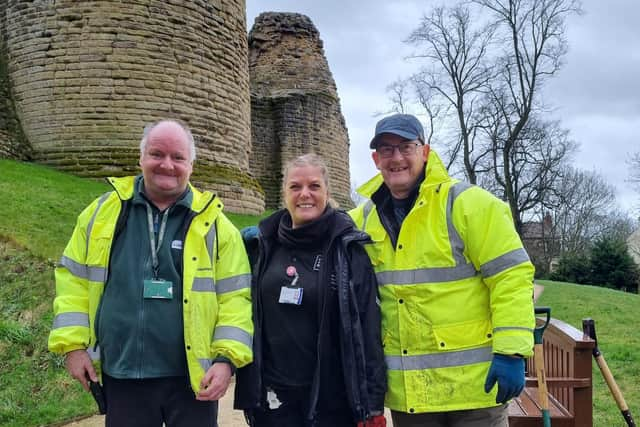

Joe was a single mum to her then teenage daughter when the phone call came.
"I was on the last week of my 12 week redeployment, and I was going on computer courses and things and thinking ‘what am I going to do to pay my mortgage?’ and basically I got this phone call from the council: ‘We don't know whether you'll be interested, we've got this part-time custodian live-in at Pontefract Castle’.
"Well, it took me all of two minutes to decide this was the job I was going to come to because I've always been outside-y, always been interested in history, and wanted a bit of a change.”
Advertisement
Hide AdAdvertisement
Hide AdThe building Joe lives in – the lodge – is part of a group of connected buildings sitting at the castle’s entrance which were all built during the Victorian era when the grounds were made into a pleasure park.
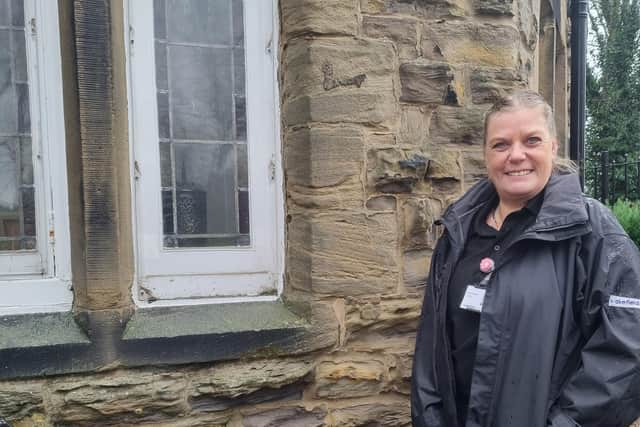

When Joe moved in, the lodge was renovated with new heating and a new kitchen. She said: “It's an absolutely beautiful place.
"We do a lot of busman's holidays - when I go away, we tend to go and find castles as well. They don't usually believe it when I say that I live in a castle ground."
It will have been 18 years in June since Joe moved into the lodge as custodian. Her role as a site officer is shared with a part-time staff member to ensure the role is covered seven days a week.
Advertisement
Hide AdAdvertisement
Hide AdOne of Joe’s roles is to carry out site checks. Walking through Pontefract Castle’s ruins every day for 18 years means that Joe is able to identify any imperfections in the stone work purely by sight.
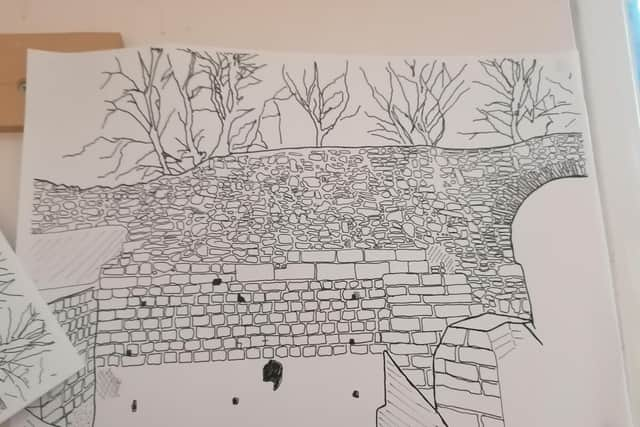

Ian Downes, operations and events officer at the castle, is responsible for the ruins and their upkeep.
Ian explained that photographs of the castle's stonework are traced onto a master document to create clear outlines of the stones.
The site officers then take photocopies out with them on their site checks and mark any stone damage. This is then transferred onto the master document and will inform visiting stonemasons where repairs are needed.
Advertisement
Hide AdAdvertisement
Hide AdIan said the castle is made of both sandstone and limestone.
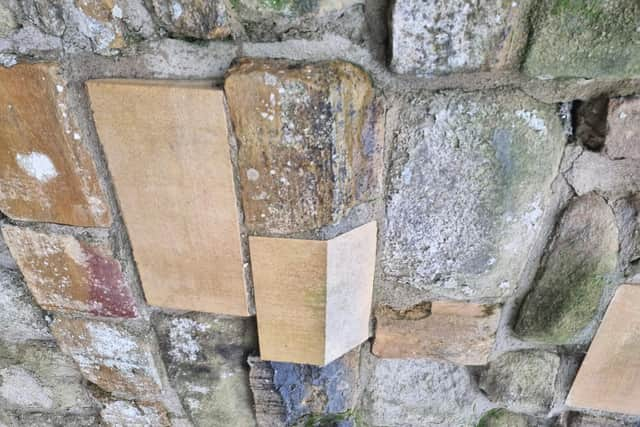

“The sandstone is quite hard wearing but the limestone is more susceptible to frost action,” he said.
"All stone is permeable so when water gets in and we get a cold spell and it freezes, that can cause some degree of movement in the stone.
"You think of stone as being rock solid but it's not, it can flex and where that freezing and thawing happens multiple days in a row, that causes the stones to shed a skin and that's one of the biggest problems because there's only so many times it can shed its skin before there's nothing left of the stone.”
Advertisement
Hide AdAdvertisement
Hide AdIt is important that honest repairs are carried out to enhance visitors’ appreciation for what is genuinely old.
Ian said: “We wouldn't ever take a new block and distress it and make it look like it's 500 years old because that wouldn't be honest.”
Reflecting on when she first moved to the castle, Joe said: “I just loved it so much.
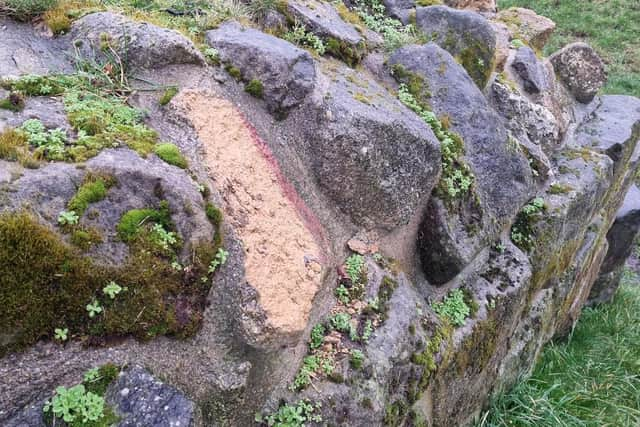

"I was quite shocked at how little anybody seemed to have any interest in the castle itself, so I just started working – very hard. I lost a lot of weight because I was walking round with the wheelbarrow.
Advertisement
Hide AdAdvertisement
Hide Ad"The castle was a totally different place. It was just a dog walking place, no one was particularly bothered about looking after it."
When she first started, a small shelter that is now a bandstand used to be the site office. Joe said it had “broken windows and a tiny little heater that practically fell of the wall. Everything's changed so much.”
Joe recently found a wish list she wrote 16 years ago for things she wanted for the castle, which has now been entirely fulfilled.
The office has since moved into what was the old museum adjoining the lodge, and the site has had much development since it secured a Heritage Lottery Fund investment.
Advertisement
Hide AdAdvertisement
Hide AdJoe is also heavily involved in the gardening at the castle. They are currently in the process of planting 500 saplings around the grounds, including 200 hazel plants.
There are a number of considerations to make when planting around a historical castle.
"The Victorians weren't particularly thoughtful about what they were going to do to the stonework," Joe said.
"They liked things to look brilliant and [have] lots of things all together, but obviously we're far more aware of not planting anything that's going to undermine the stonework at all.”
Advertisement
Hide AdAdvertisement
Hide AdEverything that is planted is a native species so as not to affect any surrounding trees. They also avoid planting anything with very big roots, and set larger plants back from the castle to avoid damaging its stonework.
The planting should contribute to the biodiversity of the site and attract caterpillars, moths, squirrels and door mice.
The team has also recently planted holly to prevent people climbing around the castle’s kitchen ruins and the remains of the Gascoigne Tower, which can cause large pieces of stone to fall.
Peter Collier is a volunteer who helps with the gardening as well as other roles, including being the castle’s resident Ilbert the dragon mascot at events.
Advertisement
Hide AdAdvertisement
Hide AdPeter said: "You put in extra trees you get more wildlife, you encourage fungi under the ground, you get different species and that builds up the wildlife above it.
"Our leader today spotted a [red] kite feeding over at the castle. Kites have been reintroduced to England several years ago over in Leeds, so it's lovely to see one here in the castle."
Joe and the team carry out most of the work in the castle grounds, with the exception of grass cutting and a few heavy duty jobs requiring machinery.
She said: "We maintain all the shrubbery, the planters, weeding, literally any maintenance you can think of, we do the painting, the undercoating."
Advertisement
Hide AdAdvertisement
Hide AdThe community surrounding the castle is also hugely important.
As part of the Duchy of Lancaster estate, the castle is required to display certain flags on given days, such as a Royal family member’s birthday or St George’s Day.
Joe said the castle also displays flags to mark other points of the year, such as Pride Awareness Month and Autism Awareness Month.
She said: "The flag is definitely part of the castle, and very important as well to the local community.
Advertisement
Hide AdAdvertisement
Hide Ad"They do question and query ‘what flag is up, and what's it for and whose birthday is it?’
"When it gets really bad weather I have to get up there and take the flag down completely so there may be periods of time when there isn't a flag up but it's purely because we don't want to lose it, [it could] rip off in the bad weather."
Joe said looking after the grounds felt more like looking after her home than a job.
"We're a big community, we know all the dog walkers, everybody knows each other and we're very supportive and we're a safe place to go," she said.
"I'm so proud of living here, working here.
Advertisement
Hide AdAdvertisement
Hide Ad"I know it's not my place but I want it to be wonderful for everybody else. And I work really hard – and the rest of the team of course – to make it a safe and fantastic time when people come.
"It doesn't matter if it's snowy, rainy, sunny, every single day I come to work and I'm like: I am so lucky to have this job."
Comment Guidelines
National World encourages reader discussion on our stories. User feedback, insights and back-and-forth exchanges add a rich layer of context to reporting. Please review our Community Guidelines before commenting.